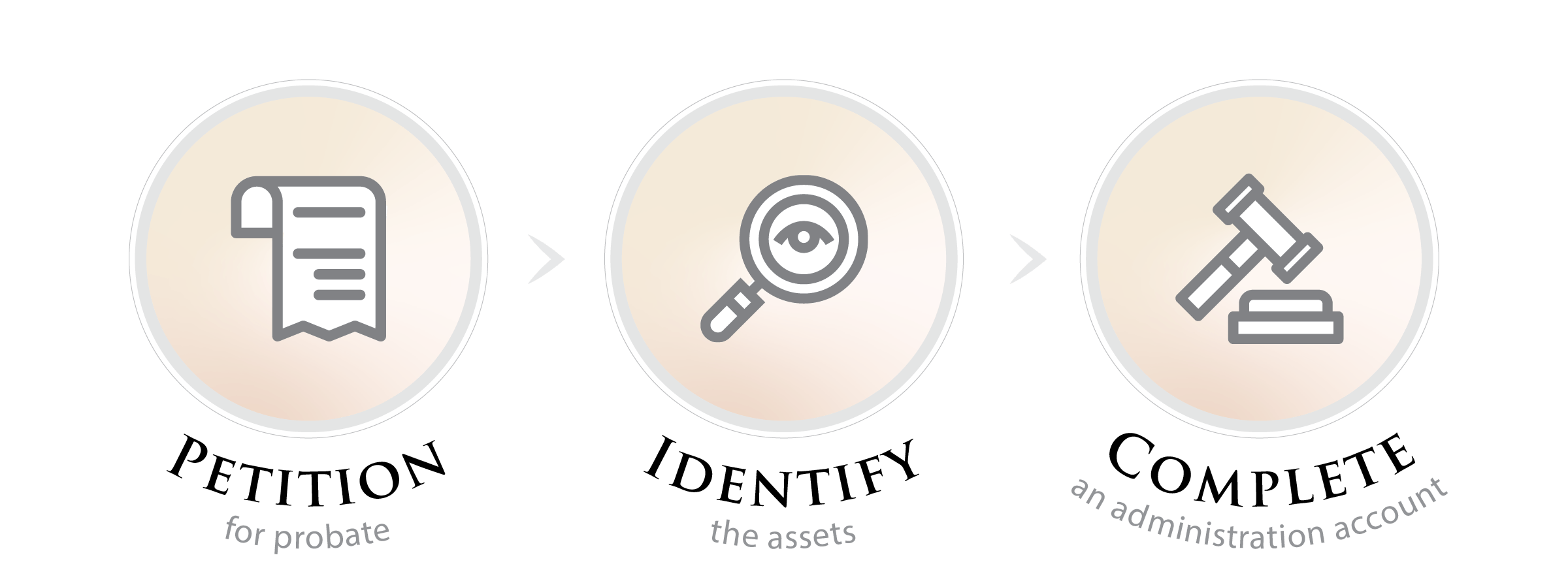At its core, the Maryland probate process is the court-required system designed to account for a deceased person’s assets, identify their creditors, and approve the distribution to estate beneficiaries.
For many families, this process can be overwhelming, and many people do not even know where to start. Here is a brief summary to guide you through the probate process.
Probate Process

1. Petition for probate
The first place to start is the petition for probate. This is the beginning of the process when the proposed personal representative asks the Register of Wills to accept them as the personal representative and accept the last will and testament presented. You would also need to identify all of the “interested persons” for the estate.
If there is no last will and testament, then the filing of the petition for probate may trigger what is called “judicial probate” and a hearing would occur to determine who amongst the interested persons should be personal representative. Unless excused in the last will and testament or agreed to by all interested persons, the proposed personal representative will have to post bond in order to serve as personal representative.
2. Identify the assets
After a personal representative is appointed, the next step is the more arduous task of identifying probate assets, securing probate assets, and then determining their value. This may involve hiring an outside appraiser.
If a personal representative does not know the whereabouts of the decedent’s assets, then a longer process is involved in an attempt to locate the assets. The personal representative also needs to open a probate estate account and complete a form—called the Information Report—to determine if there are Maryland inheritance tax issues.
3. Complete an administration account
Once the estate assets are identified and secured, the personal representative needs to account for estate expenses and income on a regular basis through the completion of an administration account.
After at least six months after the date of death (or six months after the appointment of a personal representative, if medical assistance is involved), then the estate may begin the process of closing by filing a final administration account. Common issues that slow down the closing process include the sale of the house or the filing of income tax, inheritance tax, Maryland estate tax, or federal estate tax.
Streamline the Process for Your Family
While this brief summary may give the impression that the probate process is straightforward, there are many potential issues at each step that can make the probate process more complicated.
Our approach is to work with the family to streamline the probate process. During our initial meeting, the goal is to identify any unique issues with the probate process for that client, identify paths to streamline the process, and develop a game plan to tackle the probate process.



